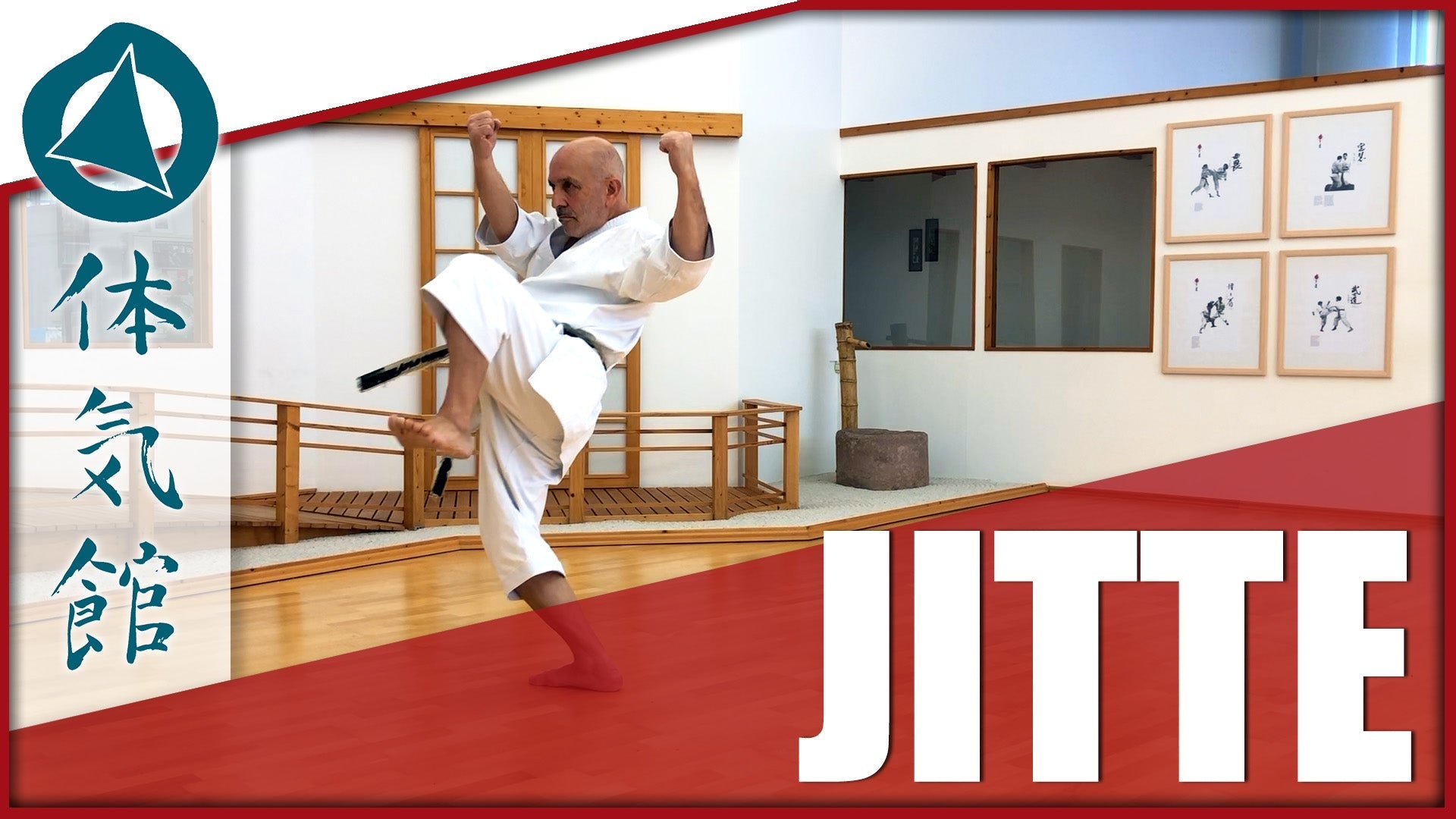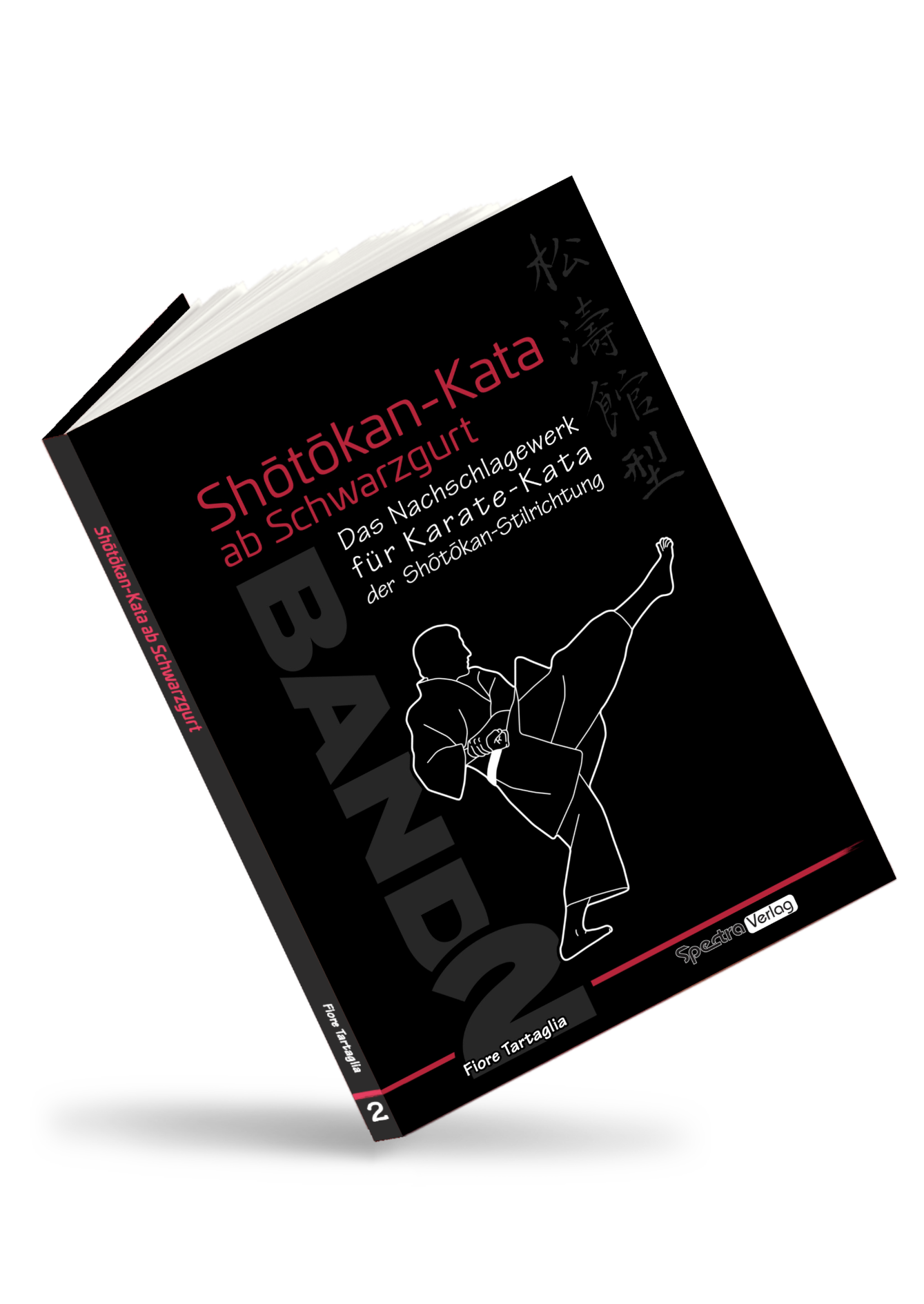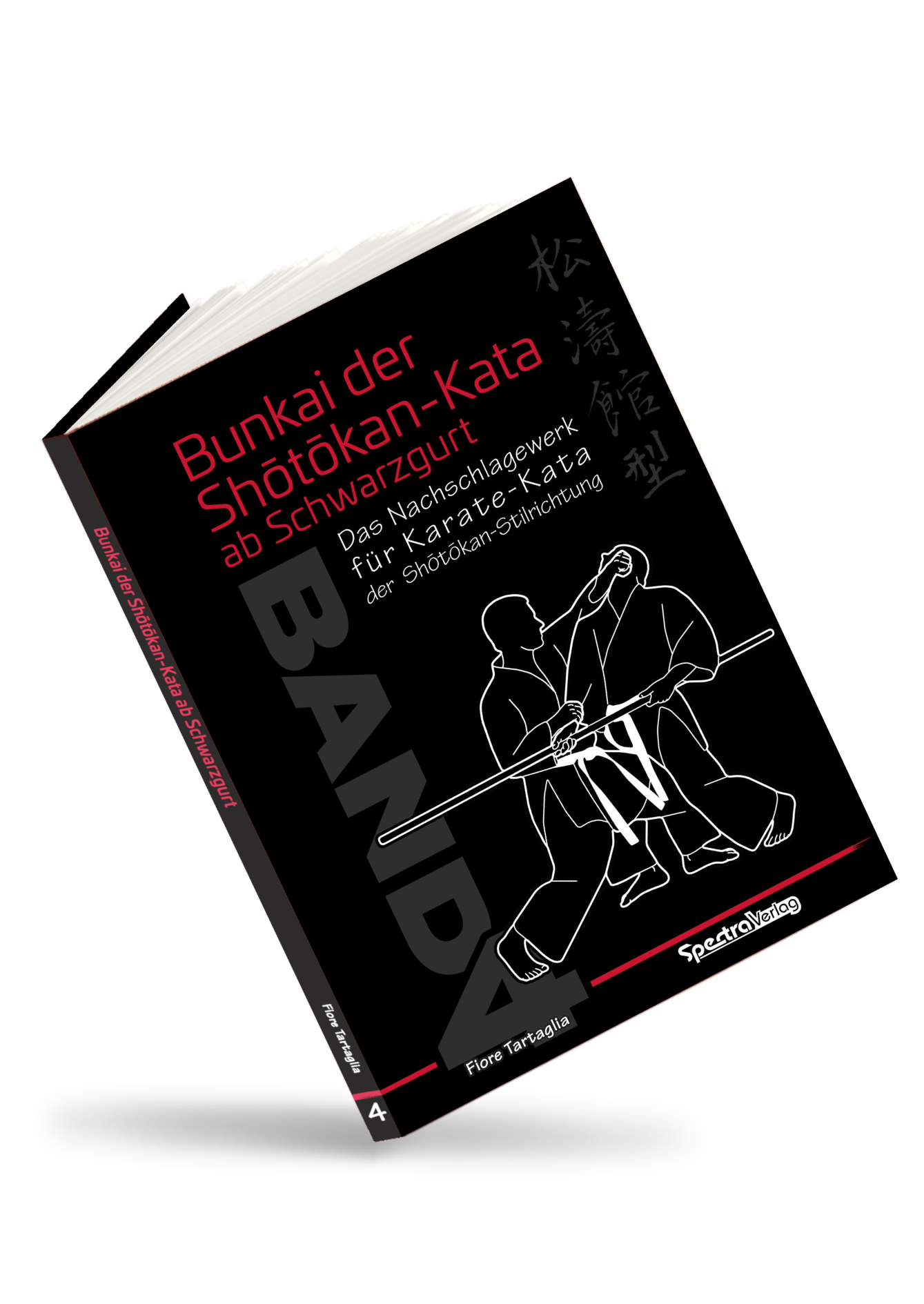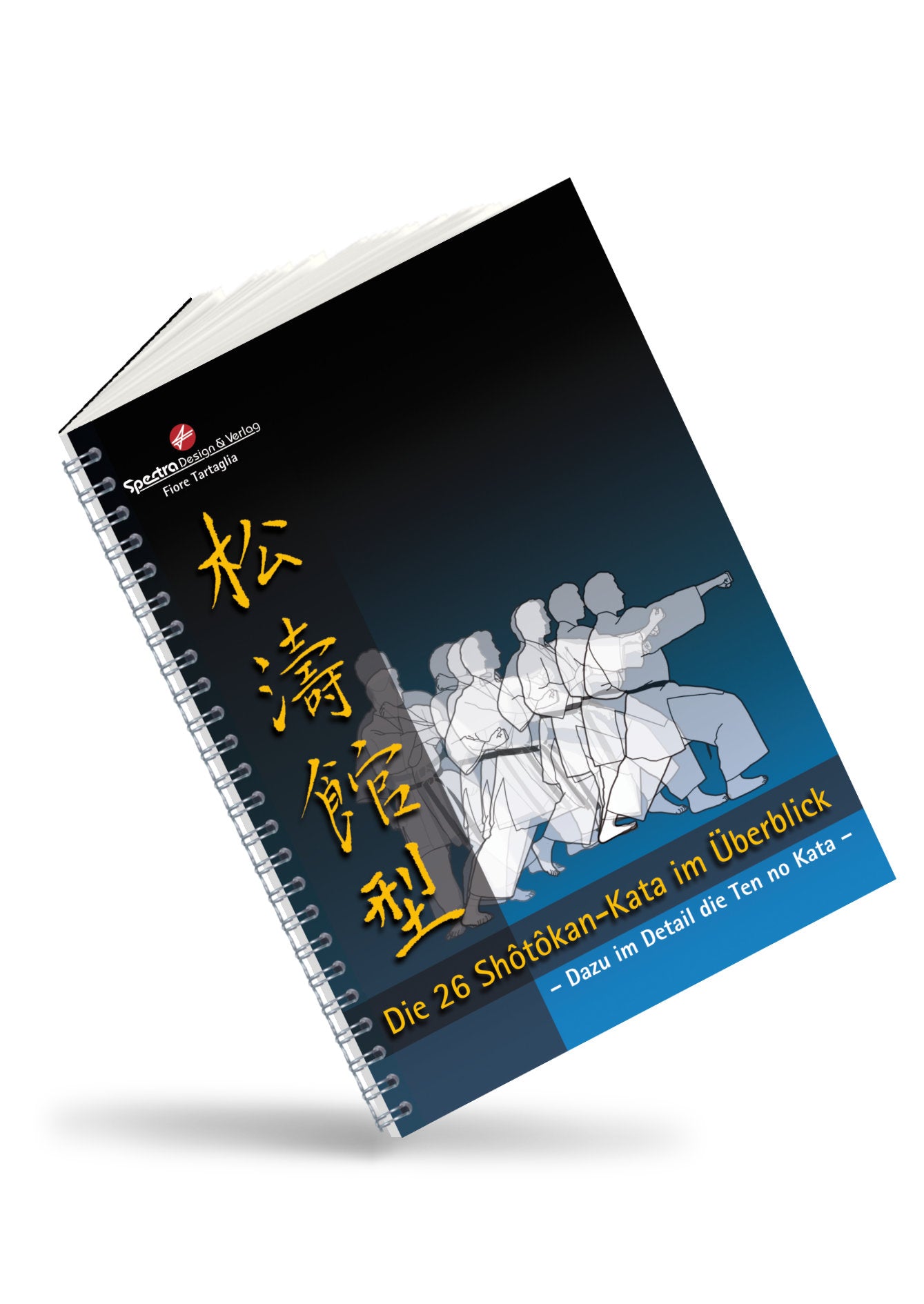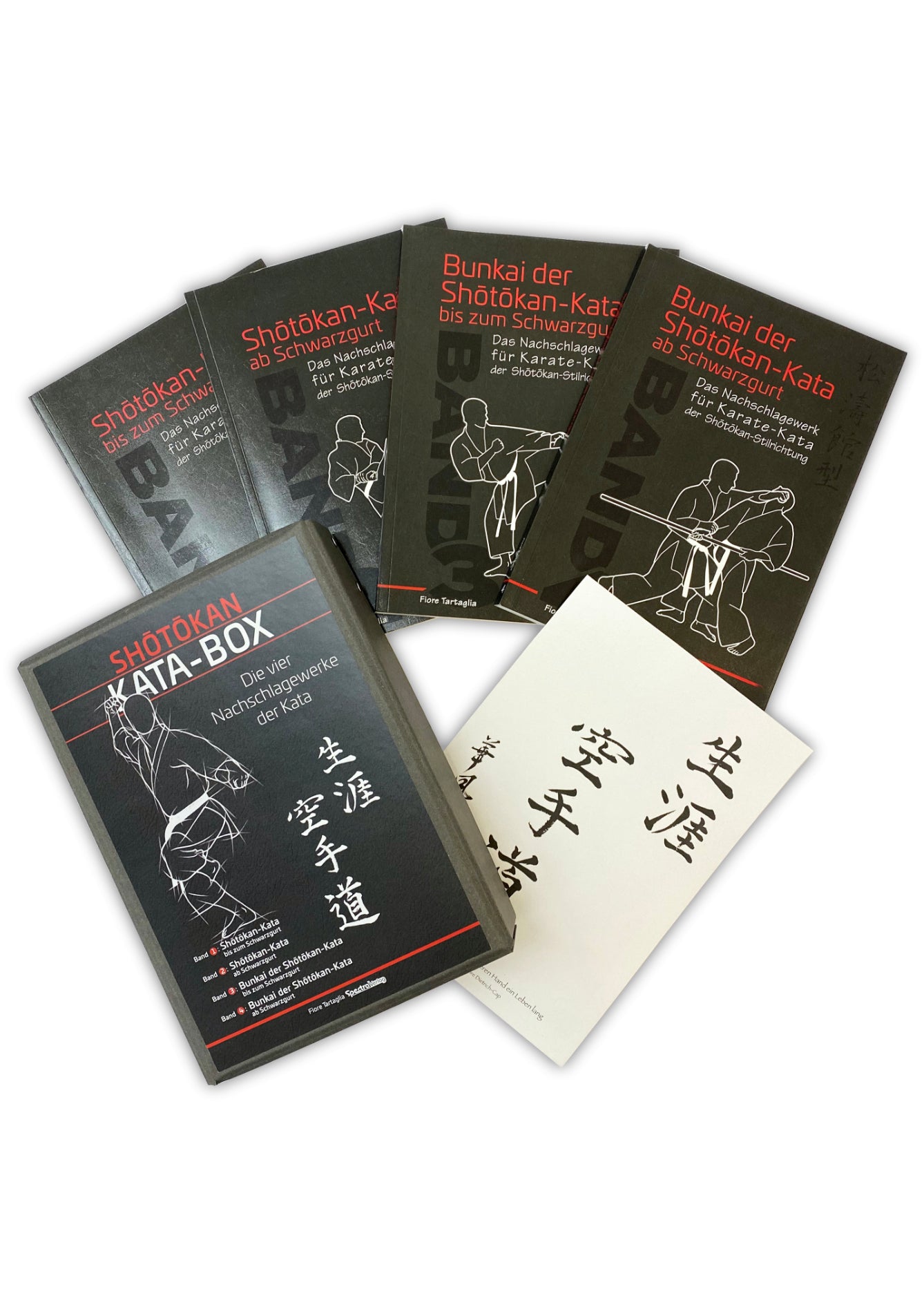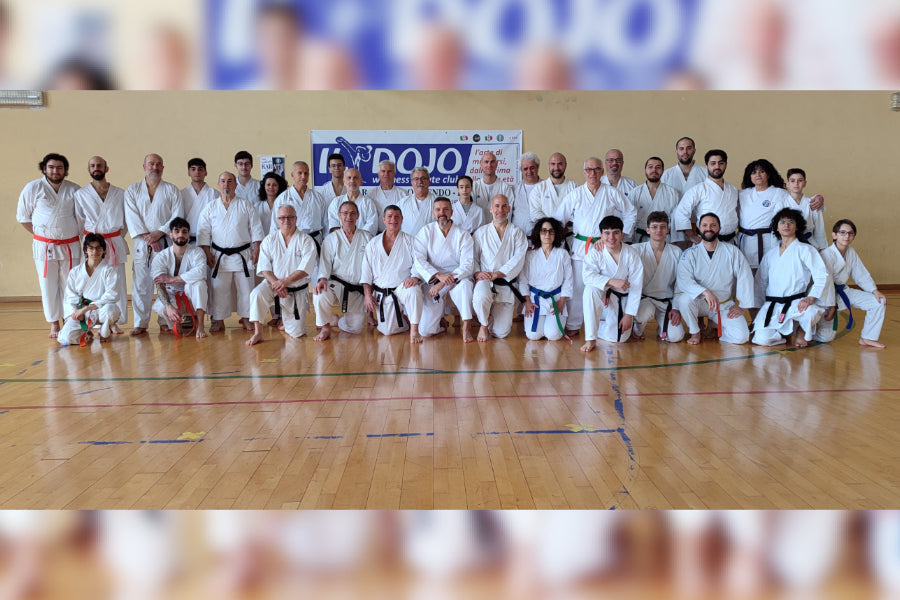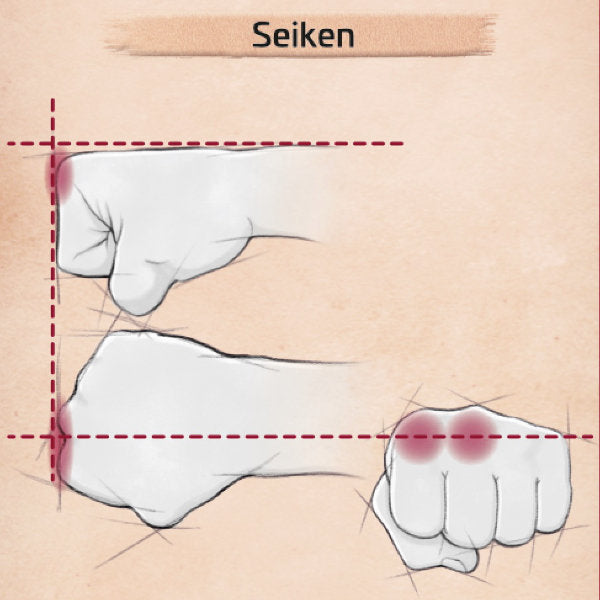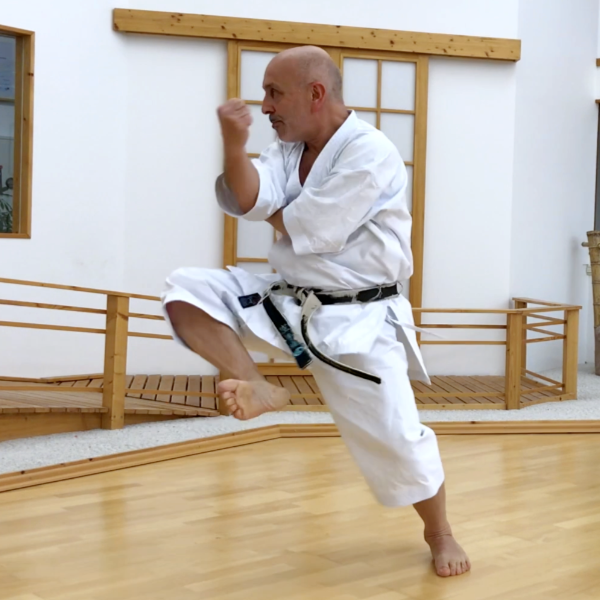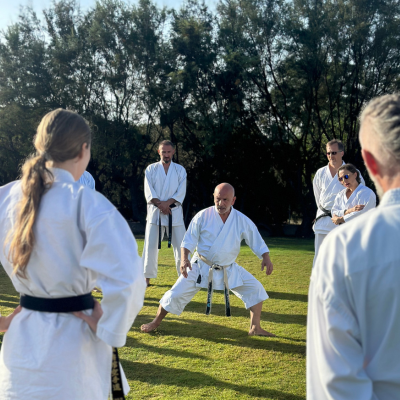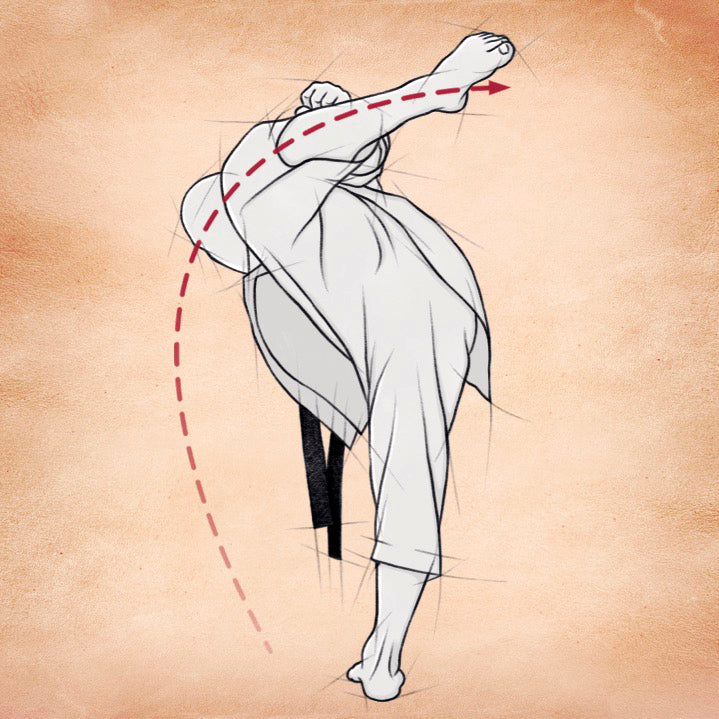JI'IN – LOVE AND SHADOWS.
Ji'in is similar to Jion and Jitte. Not only the Yōi, which is the same in all three kata, demonstrates their unity, but also other aspects.
The first technique is always performed backwards, and Manji uke and various double techniques are present in all three kata. The rhythm of Ji'in is dynamic and stable.
A technique rarely used in Shōtōkan today is Shutō uchi in Kiba dachi. The prerequisite for an effective and stable execution of this attack is perfect coordination of arm technique, hip movement, and stance.
Again – for the Bunkai aspect – the karateka is required to develop his own applications for the counter techniques after the double defensive techniques “Uchi uke – Gedan barai”.
The three-strike Tettsui uchi poses another somewhat unusual situation: Two of the attacks are executed by twisting over the back. This requires balance and body control.
In this series, the swing is very different. Here, we offer the most logical solution: after the last double block, the right hand is on top (uchi uke) and the left hand is on the bottom (gedan barai). Since the right hand is in the upper range, it stands to reason that it also swings from above. In the two following tettsui uchi, however, the swing is from below, because the attacking hand starts lower, from the hip (hikite stance).
The final Gedan Barai at the end of the kata requires considerable practice. Although there is no backswing or counter-movement, it should be executed with power. A stable stance is essential for achieving sufficient effectiveness.
The following techniques require considerable physical effort and sensitivity. Since they form the final sequence of the kata without changing positions, they can only make the finale interesting through correct hip movement, muscle tension, and rhythm.
Ji'in encompasses various individual aspects that can only be revealed through intensive study of this kata. Perhaps the name comes from this: love and shadow...
Duration: approximately 60 seconds
